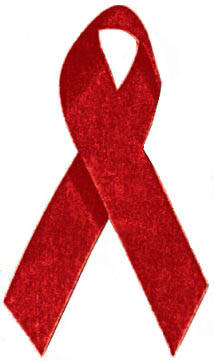This week is AIDS Awareness Week. It is thought that, worldwide, 35 million people carry the HIV virus, and although current drugs work well to prevent AIDS,  there is no cure in sight. Here's your Quick Fire Science on the history and science of HIV and AIDS, with Kate Lamble and Simon Bishop. - On the 5th of June, 1981, reports arose of 5 men in Los Angeles who'd contracted pneumonia. Their immune systems had all been weakened by exposure to something completely unknown - although it turns out that these were the first recorded cases of AIDS.
there is no cure in sight. Here's your Quick Fire Science on the history and science of HIV and AIDS, with Kate Lamble and Simon Bishop. - On the 5th of June, 1981, reports arose of 5 men in Los Angeles who'd contracted pneumonia. Their immune systems had all been weakened by exposure to something completely unknown - although it turns out that these were the first recorded cases of AIDS.
- Since then, it is thought that 36 million people have died of the disease.
- AIDS is caused by the human immunodeficiency virus -- or HIV. HIV works by entering immune cells and using the cell's own machinery to make copies of itself, damaging the cell in the process.
- AIDS occurs when the immune system is compromised by the HIV virus, making a patient vulnerable to pneumonia, TB or other opportunistic diseases.
- The virus is spread when HIV-containing bodily fluids, including blood, mucous and breast milk, mix with the blood of an HIV negative person. Contraception and education are crucial preventative measures.
- In the UK, HIV diagnoses surged in the early 2000s, and it is thought that today nearly 23,000 people unknowingly carry the virus. Encouragingly, HIV diagnoses are now declining.
- Advances in medical treatment mean that diagnoses of AIDS, and deaths caused by AIDS, have decreased in the UK since 1998.
- To combat HIV, antiretroviral drugs prevent cells from copying the virus. Other drugs attack the virus itself, but it tends to evolve quicker than we can design this kind of medication.
- Because of available treatment, in 2011 only 1% of HIV patients in the UK died from AIDS, which is about the same death rate as the general population.
- A promising new approach uses other infectious, but safer, viruses that can invade HIV positive cells. They then make chemical markers that expose the infected cells to the immune system, and this has been shown to work with studies in monkeys.
- Unfortunately, some people are resistant to the current antiretroviral drugs, including nearly 9% of HIV positive people in the UK. To overcome this, sequencing technology can now be used to look at a patient's DNA and see which drugs are most likely to work.
- DNA sequencing is also being used to study naturally HIV resistant people. Researchers hope the secrets they hold could help design a cure, or even ways to stop HIV infection in the first place.










Comments
Add a comment